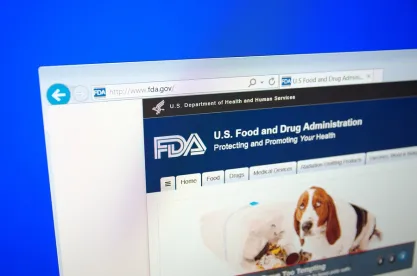Question
I understand that the inclusion of an aluminum foil layer in laminate materials is considered by FDA to be a functional barrier. Should the aluminum foil layer have a minimum thickness to be considered a functional barrier for printing ink? Or does the aluminum foil layer thickness not matter if it has PET layers laminated on both sides?
Answer
While a number of FDA’s food additive regulations in Title 21 of the Code of Federal Regulations incorporate the concept of a “functional barrier,” e.g., 21 C.F.R. § 175.105 (“Adhesives) and 21 C.F.R. § 177.1390 (“Laminate structure for use at temperatures of 250F and above”), FDA does not specifically define this term. Under Section 177.1390, FDA does consider aluminum foil to be an effective barrier to migration of materials used on the non food-contact side of the foil, and the regulation does not specify any minimum thickness of the aluminum foil layer.
Notably, however, metallization (i.e., a very thin vapor-deposited aluminum oxide layer on a film) does not constitute an “aluminum foil” layer. The metallized plastic must itself be a functional barrier.
You mentioned PET layers may be applied on both sides of the aluminum foil. In its Use of Recycled Plastics in Food Packaging (Chemistry Considerations), the U.S. Food and Drug Administration (FDA) states that virgin PET is an effective barrier to contaminants that could potentially migrate from a recycled plastic inner layer under the following conditions:
-
At a thickness ≥ 25 µm (~0.001 in) at room temperature and below, and
-
At a thickness ≥ 50 µm (~0.002 in) at higher temperatures, including use as a dual-ovenable container for cooking food at 150°C for 30 min, provided that only food containers are used in the feedstock to manufacture the recycled layer.
Although this guidance is provided in the context of recycled plastics, it suggests FDA considers PET layers specifically meeting the thickness criteria above will serve as a functional barrier to prevent migration of substances from the non food-contact side under the stated conditions of use. Layers made from other, non-PET polymers must be assessed on a case-by-case basis, through testing or mathematical modeling, to determine whether they may be considered a functional barrier in the application of interest.



 />i
/>i

